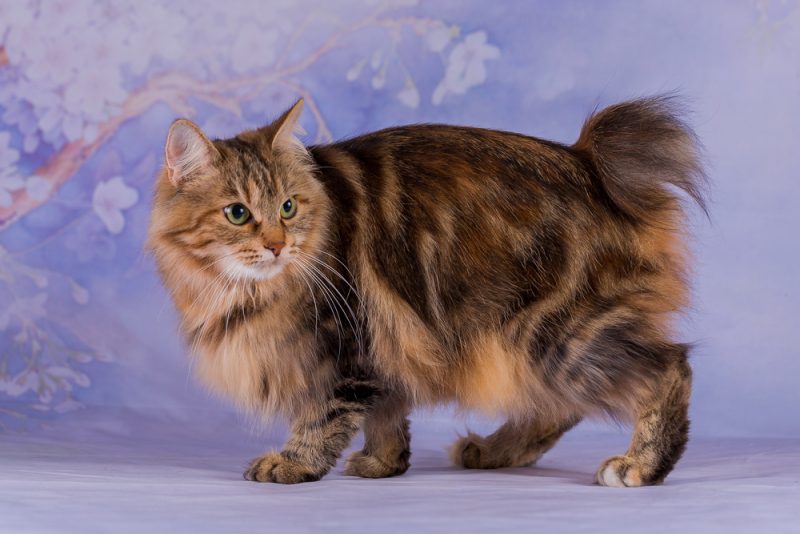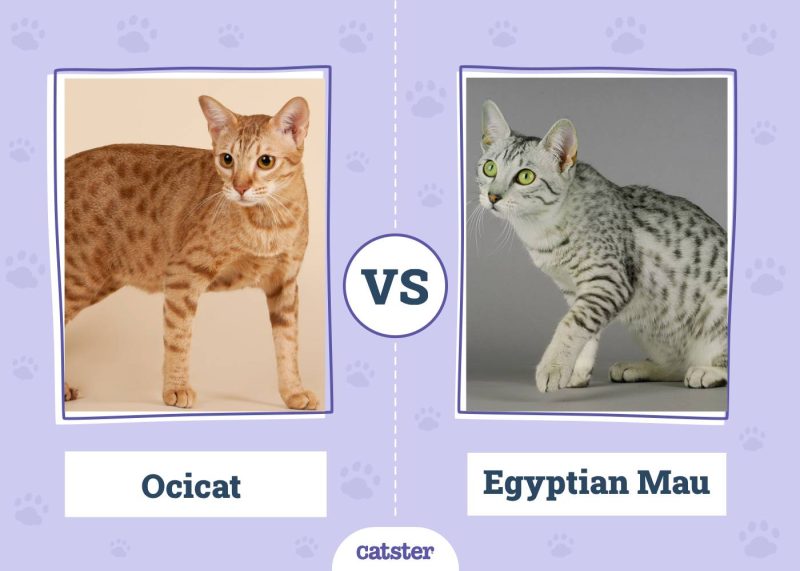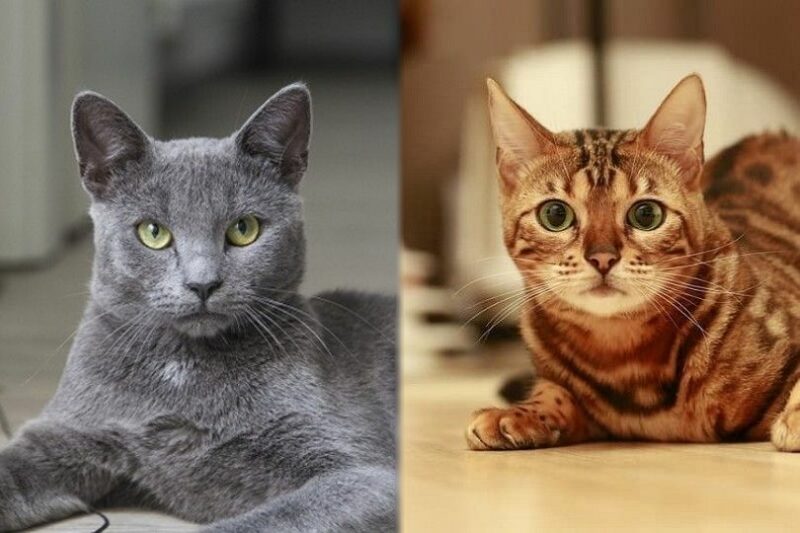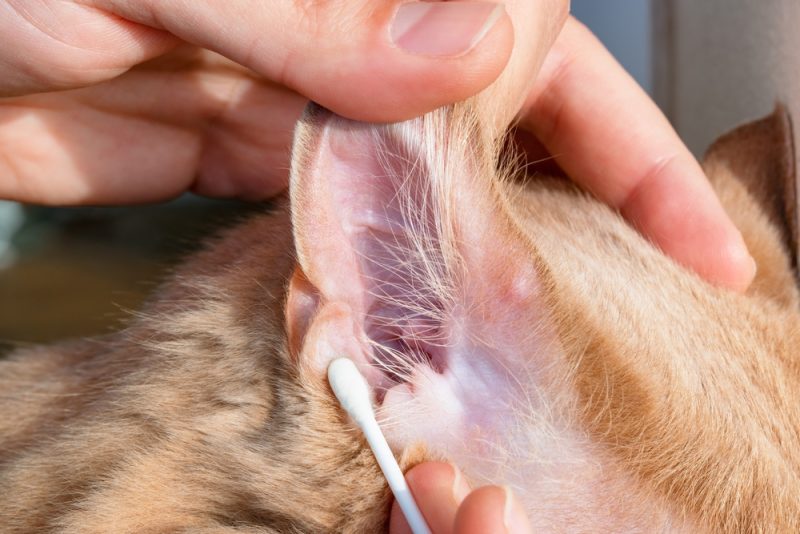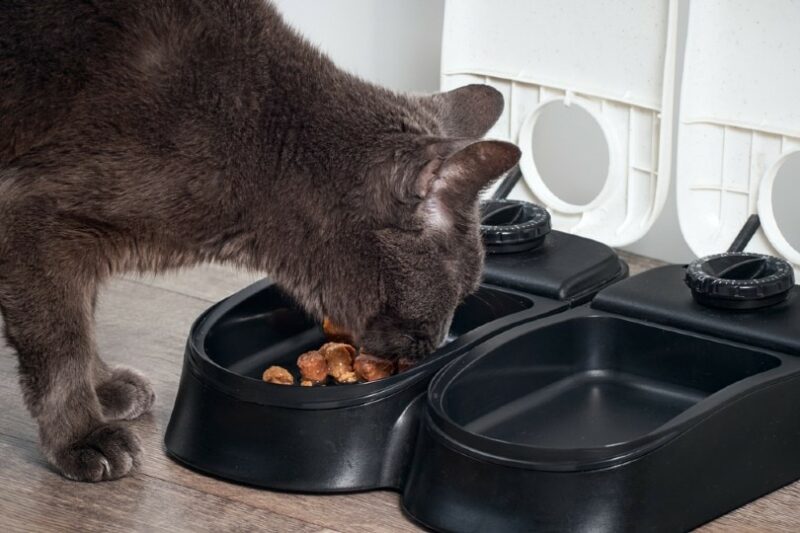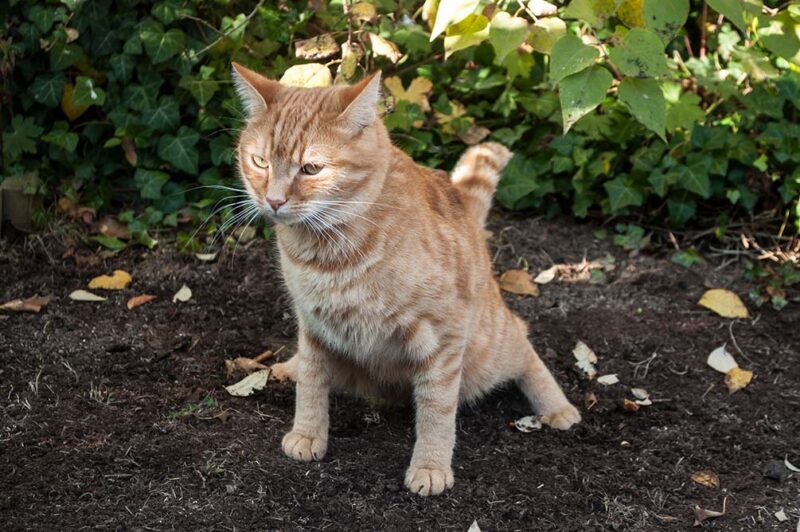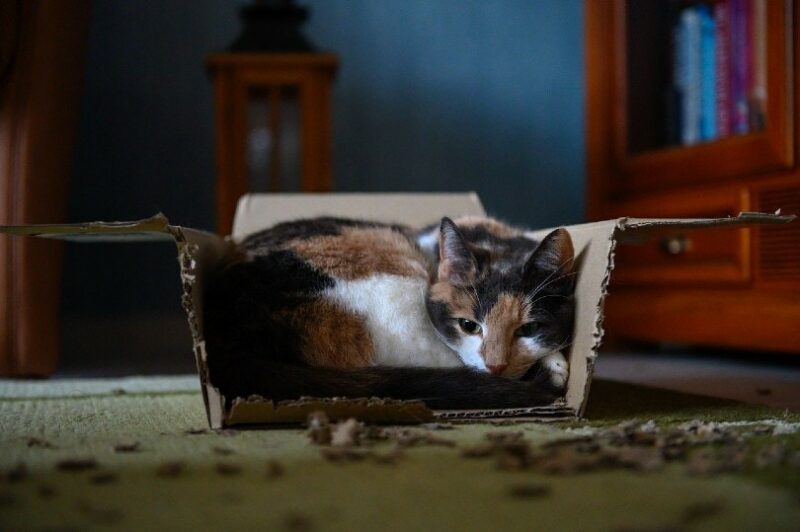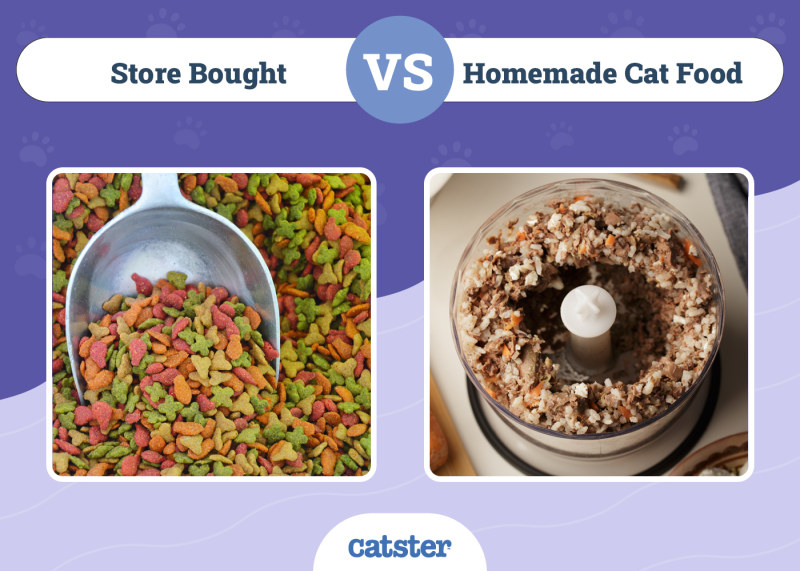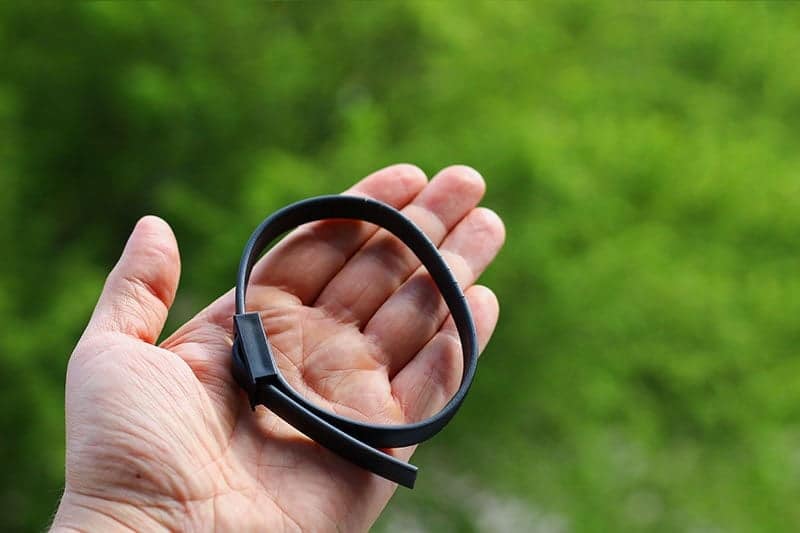In this article
View 8 More +Japanese Bobtail Longhairs are a gorgeous longhaired version of the traditional Japanese Bobtail. These kitties have easy-to-maintain long, silky coats and the trademark “rabbit” tail that the breed is known for. This sweet and outgoing breed can make a fantastic companion for nearly every family. Read on to learn more about caring for the Japanese Bobtail and to learn if this kitty will be the perfect fit for your lifestyle.
Breed Overview
Height:
8–9 inches
Weight:
5–10 pounds
Lifespan:
9–15 years
Colors:
Tri-colors, bi-color, calico, white, black, brown, cream, etc
Suitable for:
Families, households with other pets, first-time cat owners
Temperament:
Outgoing, adaptable, friendly, intelligent, active
The Japanese Bobtail Longhair is a beautiful cat breed with a distinct tail—or, rather, lack thereof—that sets it apart from most other cats. This short tail is a mutation caused by the expression of a dominant gene. The gene is fixed for this breed, so generally, all kittens born to even a single Japanese Bobtail parent will have a stubby tail, too.
Japanese Bobtail Longhair Characteristics

Japanese Bobtail Longhair Kittens

Despite numerous Japanese Bobtail Longhair breeders throughout North America, they remain a relatively rare breed. A Google search brings up several breeders, but potential adopters must do thorough research before choosing which breeder to use.
Reputable breeders should have proof that veterinarian specialists evaluated their breeding pair before mating. They should also offer references and certifications if asked and allow potential adopters to meet the parents if required. Finally, all reputable breeders provide a guarantee and a breeder contract.
Japanese Bobtail Longhair Origin & History
Legend says that the Japanese Bobtail is an ancient cat breed that was initially given to Japan’s emperor over 1,000 years ago. However, its true origin story remains a mystery.
The breed wasn’t seen outside of Japan until the 1960s when American breeders set their eyes on these beautiful kitties and took matters into their own hands. The short-haired variety earned Championship status from the Cat Fanciers’ Association in 1976, but the longhair didn’t achieve the same status until 1993.

Temperament & Intelligence of the Japanese Bobtail Longhair
The Japanese Bobtail Longhair is a highly active and intelligent breed. They’re textbook extroverts and will happily spend their day “talking” to you with their expansive vocabularies of meows and chirps. These cats are very people-oriented and thrive in households with active families that prioritize playtime. Japanese Bobtails are so friendly and outgoing that they won’t have a problem greeting strangers like old friends. Because they genuinely love connection, they want to be involved in everything going on around the home.
When they’re not busy playing or following their humans around the home, Japanese Bobtail Longhairs keep themselves occupied by exploring every nook and cranny. These clever kitties will find a way to climb on top of your kitchen cupboards to investigate and aren’t afraid to scale your bookshelves to get a better view of their home.
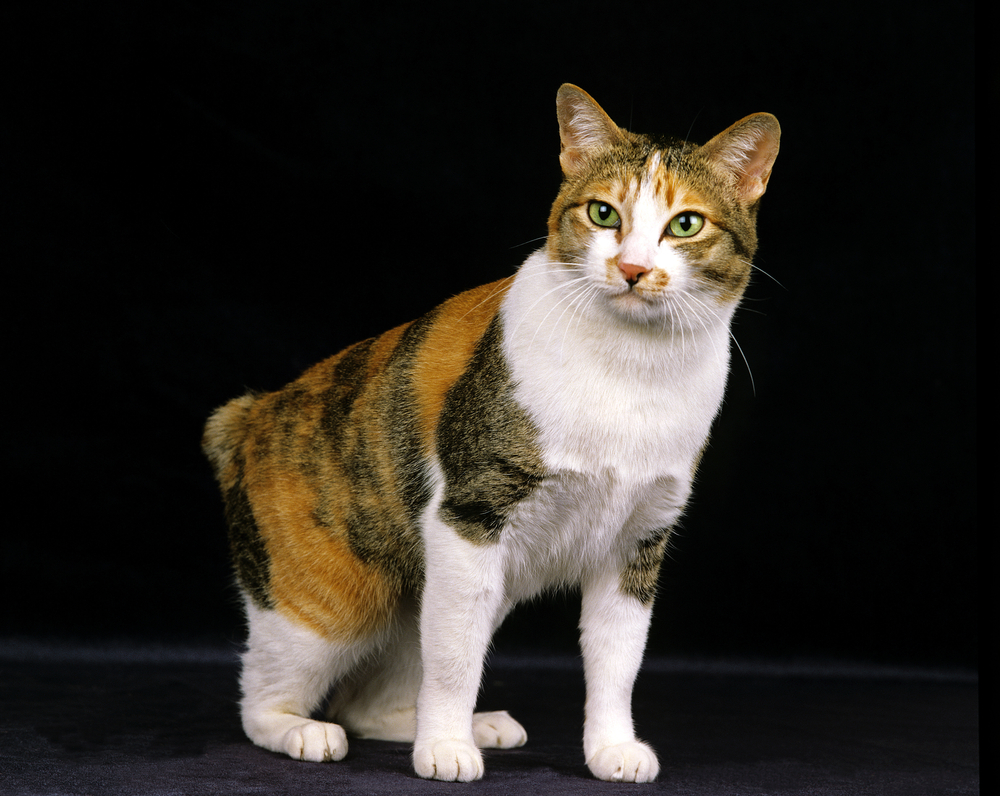
Are These Cats Good for Families?👪
The Japanese Bobtail Longhair can make an excellent companion for homes with children. They’re so easygoing that they can thrive in nearly any household, whether it’s a bustling home with five kids or a more relaxed environment.
Because they’re so people-oriented and extroverted, Japanese Bobtail Longhair cats get along with pretty much anyone. They’ll happily play with your kids, but they’re also content with kicking back and relaxing for movie night.
However, it may be better to wait to adopt a furry companion if your children are very young or don’t have the capacity to learn and respect boundaries just yet. As extroverted as Japanese Bobtail Longhair cats are, they still enjoy moments of independence and won’t enjoy living with someone who doesn’t respect their need for time alone.
Does This Breed Get Along With Other Pets?
Japanese Bobtail Longhairs aren’t only social toward their human family members, but they can get along swimmingly with other feline housemates, too. Their easygoing and adaptable temperament also means that these kitties can share their living space with canine family members. However, it’s essential to follow a proper introduction period when bringing a new animal into the home.

Things to Know When Owning a Japanese Bobtail Longhair:
Food & Diet Requirements🐡
Healthy Japanese Bobtail Longhair cats have the same food and diet requirements as any other cat breed.
Cats should eat a commercially prepared diet that’s labeled as “complete and balanced” for their life stage. Growing kittens have different nutritional requirements than their adult counterparts, so make sure you’re feeding your kitty food labeled for “growth.” Once they’re 12 months old, they can slowly transition to an adult diet labeled for “maintenance.”
As obligate carnivores, cats need a diet high in animal protein. A good rule of thumb is that any food you offer your kitty should have a real protein listed as the first ingredient.
Exercise🐈
While cats’ exercise needs aren’t as high as their canine counterparts, they still require physical activity to be healthy and happy. Japanese Bobtail Longhair cats love to play and explore, so owners should capitalize on their kitty’s curiosity and knack for adventure.
Their ideal environment includes window perches for surveying their territory outside the home, cat trees for watching over their indoor territory, and scratching posts for satisfying their innate desire to scratch.
Training🧶
Because they’re so people-oriented, Japanese Bobtail Longhairs are very eager to please their owners. For this reason, they can be taught to walk on a leash and perform tricks. Just make sure you have some yummy, high-value treats on hand to reward them for a job well done.
Grooming✂️
As with all cats, the Japanese Bobtail Longhair tackles much of their grooming themselves. They’re very fastidious, but that doesn’t mean they don’t require some help from you. Owners should expect to do some coat maintenance a few times per week for optimal coat health.
Insight into this breed’s grooming regimen is evident right there in its name—Japanese Bobtail Longhair. These cats have long coats that require regular maintenance to keep them looking their best. You’ll want to invest in a few grooming tools, such as a metal comb for detangling and a bladed brush for removing mats. Thankfully, their silky textured coat doesn’t mat or tangle too easily.
Since Japanese Bobtails don’t have undercoats, they don’t shed much other than during seasonal coat changes.
Nail care is another essential aspect of cat ownership that you can’t skimp out on. Though your kitty will sharpen their claws on their cat tree (or your favorite furniture if you don’t provide them with places to scratch), you may need to step in and trim their nails if they get too long.
Dental hygiene is an often skipped-over part of the grooming regimen, but it can reduce your pet’s likelihood of developing dental disease, so it’s worth learning how to do it.
Health and Conditions🏥
While the Japanese Bobtail Longhair is a relatively healthy cat breed, these kitties may be prone to developing many of the same health conditions that affect other breeds.
Hypertrophic cardiomyopathy (HCM) is the most commonly diagnosed heart disease in cats. It causes the walls in a cat’s heart to thicken, ultimately decreasing its efficiency.
Like other cats, Japanese Bobtail Longhairs are likely to develop some form of dental disease. However, proper dental hygiene can largely prevent these issues.
Ensuring your kitty is fed the right diet in proper portions and has plenty of opportunities for exercise and play can help prevent obesity, another extremely common (and preventable) condition in cats.
- Dental issues
- Obesity
- Hypertrophic cardiomyopathy
Male vs Female
The most noticeable difference between male and female Japanese Bobtail Longhair cats is their size. Males tend to be a bit stockier, taller, and heavier, while females are lankier and daintier. The weight difference is generally anywhere between three and five pounds.
Personality differences between genders are purely anecdotal. However, some traits can be linked to hormones. For example, neutered males may be more pleasant household companions than their intact counterparts. Unneutered males may mark their territory by spraying, but neutering reduces or eliminates spraying in around 85% of male cats.

3 Little-Known Facts About the Japanese Bobtail Longhair
1. Japanese Bobtails are said to bring good luck.
Most people are familiar with maneki-neko statues. These beckoning cat figurines are believed to bring good luck to the owner and are actually modeled after a calico Japanese Bobtail.
2. Japanese Bobtails are unlike other stubby-tailed cat breeds.
Manx cats also have short tails. While a genetic mutation causes both the Manx and Japanese Bobtails’ stubby tails, the latter isn’t plagued by many of the same issues the former faces due to the mutation. For example, Manx cats often develop problems like spina bifida or pelvic abnormalities, while the Japanese Bobtail isn’t believed to develop genetic health issues as a result of the mutation.
3. The hind legs of a Japanese Bobtail are longer than the forelegs.
It’s not just the stubby tail that sets the Japanese Bobtail apart from other cats. Their back legs are longer than their front legs and have a distinct “Z” shape. These back legs are very muscular and help the cats jump further and higher.
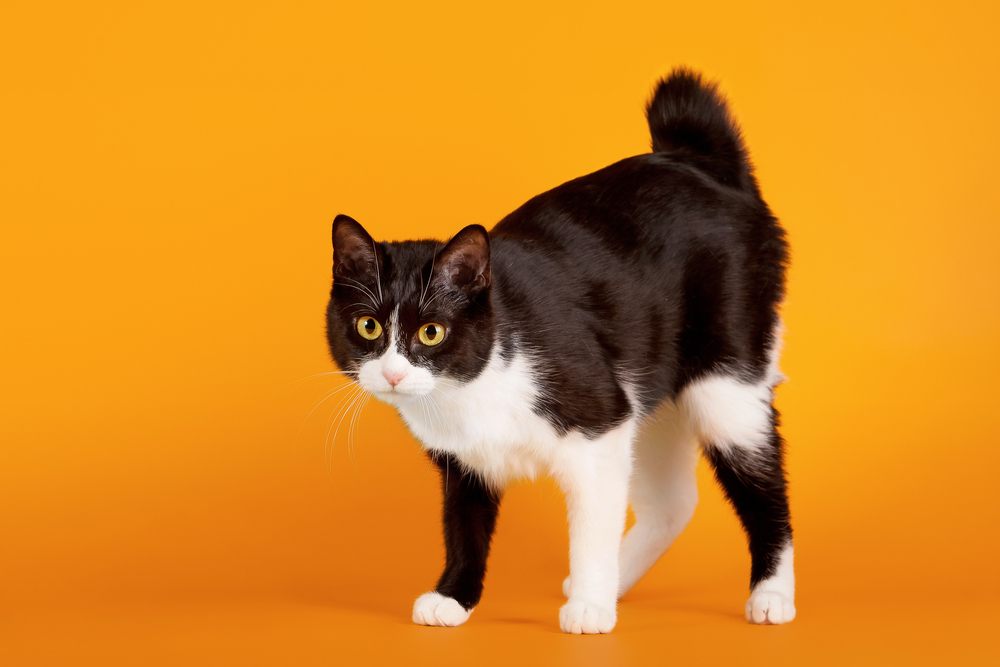

Final Thoughts
The Japanese Bobtail Longhair is a beautiful cat breed with a silky, low-shedding coat. These cats aren’t just pretty faces, though, as their personalities are extraordinary, too. This breed is known for its friendly, loyal, and affectionate temperament. These little extroverts have a genuine love for everyone in their family, whether it’s the adults, young kids, other furry housemates, or the neighbor popping by for a visit.
Japanese Bobtail Longhairs are indeed unparalleled companions, but if you’re considering adding one to your family, take the time to choose the right breeder. Not all cat breeders are in the business for the right reasons, so do your research and ask lots of questions before committing to adopting.
Featured Image Credit: Ekaterina Krivtsova, Shutterstock
